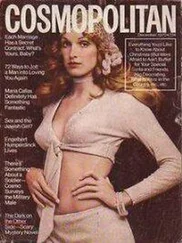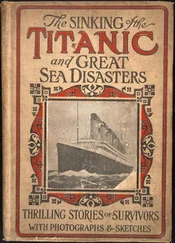The discussions of these military men centred on the possibility of removing Viola from power. Admiral Anaya, now head of the navy, pledged his and the navy’s support to Galtieri, but had one specific proviso: that the navy be allowed to expand its plans to recapture the Malvinas, and to work towards their implementation by the end of 1982. The deal was agreed, the meal concluded and events took their course.
Viola, already somewhat ill, was retired, and General Galtieri assumed his position as President and head of the junta a few days later.
True to his word, in January 1982 Galtieri authorized Anaya to start planning for the military takeover of the Malvinas in earnest. The headquarters of the Argentine navy, on Avenida Comodoro Py, is a huge stone building, approached by an enormous set of monumental steps. Like any large headquarters, it is a hotbed of gossip, and for secrecy the Malvinas planning group was set up in the Navy Club, an old building on the corner of Florida and Avenida Corrientes in the centre of Buenos Aires. The Navy Club is modelled on the exclusive old gentlemen’s clubs of St James’s in London. Approached via an old-fashioned semicircular, metal-grilled lift, its discreetly quiet and elegant rooms were the perfect place to organize a military conspiracy.
The planning group was headed by the Argentine fleet commander, Rear Admiral Juan José Lombardo, and its strategy was based on the plans that had already been worked up by Admiral Anaya in 1977. These assumed that a small amphibious force of three thousand men could land close to Stanley, immobilize the small detachment of marines stationed there and then effectively continue to hold the islands with a force of just five hundred troops. The view of the admirals was that this fait accompli would leave the British government impotent to effect any change in the situation. This was more than a purely military assessment. Rear Admiral Jorge Allara, who was to become head of the invasion force, had recently returned from a two-year stint in London as the Argentine naval attaché. He firmly believed that Britain was indifferent to the fate of the Falklands and would seek a settlement. As the plans progressed and started to take more concrete form, they were given the name Operation Azul, and the working group moved to the large naval base at Puerto Belgrano. The invasion was provisionally scheduled for the end of the year, December 1982.
There was, however, another operation being worked on in the Argentine navy – a secret within a secret, which had been created by Admiral Anaya and was running parallel to Operation Azul, and which the planning group knew nothing about.
To the south-east of the Falklands lies the island of South Georgia, which was also a British possession, having been discovered by James Cook in 1775. It had for many years housed a group of settlements that were supported by the whaling industry. It was there in May 1916 that Shackleton, in his small boat the James Caird , had landed after crossing miles of stormy ocean to seek rescue for his crew stranded on Elephant Island 800 miles away. Despite Cook’s landing on the island, it had remained unoccupied until 1909, when a Norwegian whaler, Captain Carl Larsen, founded the Compania Argentina de Pesca and established the first whaling station there. He did so without any reference to the Falkland Islands government, which was, in British eyes at least, responsible for the administration of South Georgia. Eventually Larsen, under pressure from a British warship moored in Grytviken harbour, applied formally to the Falklands governor in Port Stanley for a lease, which was granted. In 1909, in response to the growth of Larsen’s whaling interests, a civilian station was established at King Edward cove, along the coast from Grytviken, and a stipendiary magistrate appointed, whose function was to act as the British representative
The whaling industry flourished and, as well as Grytviken, whaling stations were established at several points on the sheltered north-east coast, at Leith Harbour, Stromness, Husvik and Ocean Harbour, Prins Olav Harbour and Godthul. Some of these stations were set up, as their names imply, by the Norwegian companies involved in whaling in the South Atlantic, but a Scottish firm, Christian Salveson, was expanding and beginning to dominate the whaling industry. They made their own base in Leith Harbour, later expanding to Stromness and Prins Olav. Salveson brought modern industrial techniques to the industry: they tried to make profits from the entire whale, not just its oil, so machinery and a processing plant were installed to produce fertilizer and animal feed from the bones and flesh of the whale’s carcass.
The demand for whale products started to decline after the Second World War, and by 1963 Salveson had withdrawn from the whaling business. The thriving communities on South Georgia died, leaving behind their houses, churches and the extensive factories for producing whale oil and other products. Now just scrap, the machinery sat there rusting and decaying, and the population of South Georgia was reduced to the occasional scientific expedition and the handful of volunteers from the British Antarctic Survey who were stationed there.
In 1979 Christian Salveson were approached by an Argentinian who wanted to salvage the scrap metal contained in the abandoned equipment and plant of the former whaling stations. A contract was signed, and for the sum of £160,000 Constantino Davidoff acquired the rights to salvage the remains of Christian Salveson’s whaling business. The total amount of scrap metal could be worth several millions of pounds, but there were a lot of costs that Davidoff would have to meet, one of the largest being the transport of men and equipment across the 1,400 miles of stormy seas that separate South Georgia from ports in Argentina. He approached the Argentine navy for help and was met with interest. Navy supply ships travelled up and down the eastern coast of Argentina, and they were available for hire.
Davidoff’s first task was actually to travel to South Georgia to make a preliminary investigation of the various sites to which he had purchased the rights and to work out a schedule for the dismantling of the whaling factories. The navy were pleased to help him, and on 16 December 1981 he left Buenos Aires on board the Argentine ice-breaker Almirante Irízar , commanded by Captain Cesar Trombetta. Davidoff had become unwittingly involved in the Argentine navy’s plotting, for Trombetta was operating under the orders of Admiral Edgardo Otero, former head of the torture and murder centre in Buenos Aires, the Navy Mechanics School. Otero was close to the head of naval intelligence and also to Admiral Anaya. For several months they had been working on a plan to capture South Georgia, a plan code-named Operation Alpha.
Davidoff had sent notification of his visit to South Georgia to the British Embassy in Buenos Aires on the same day that the Almirante Irízar had left Argentina. Presumably to avoid any unwelcome enquiries or last-minute objections from the British Ambassador, Captain Trombetta maintained radio silence throughout the four days it took his ship to travel the 1,650 miles from Buenos Aires to South Georgia.
The correct protocol was for Captain Trombetta to stop first at Grytviken to obtain entry clearance from the British representative on South Georgia, the commander of the British Antarctic Survey, but instead he steamed straight on and dropped anchor at Leith Harbour in Stromness Bay. Davidoff and a small group of employees went ashore to make an inventory and take photos of the abandoned whaling station. Someone chalked on the side of a building ‘ Las Malvinas son Argentinas ’. After four days the ice-breaker left and returned to the mainland.
Читать дальше












